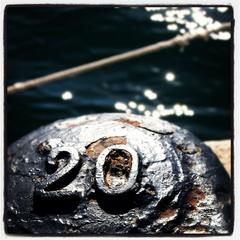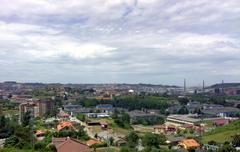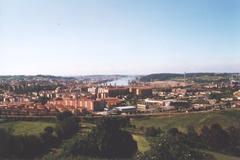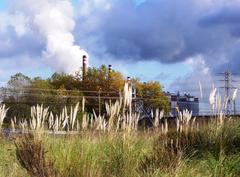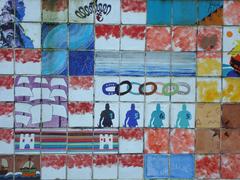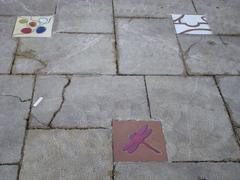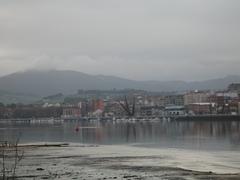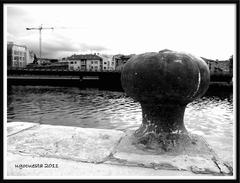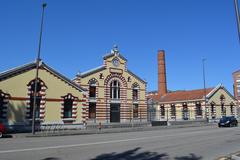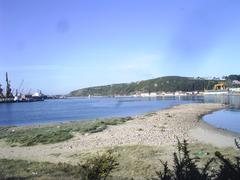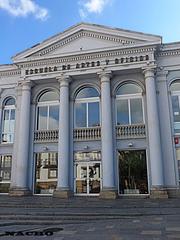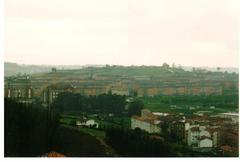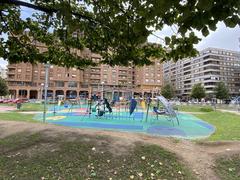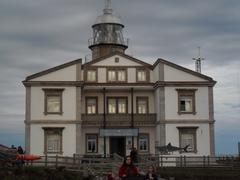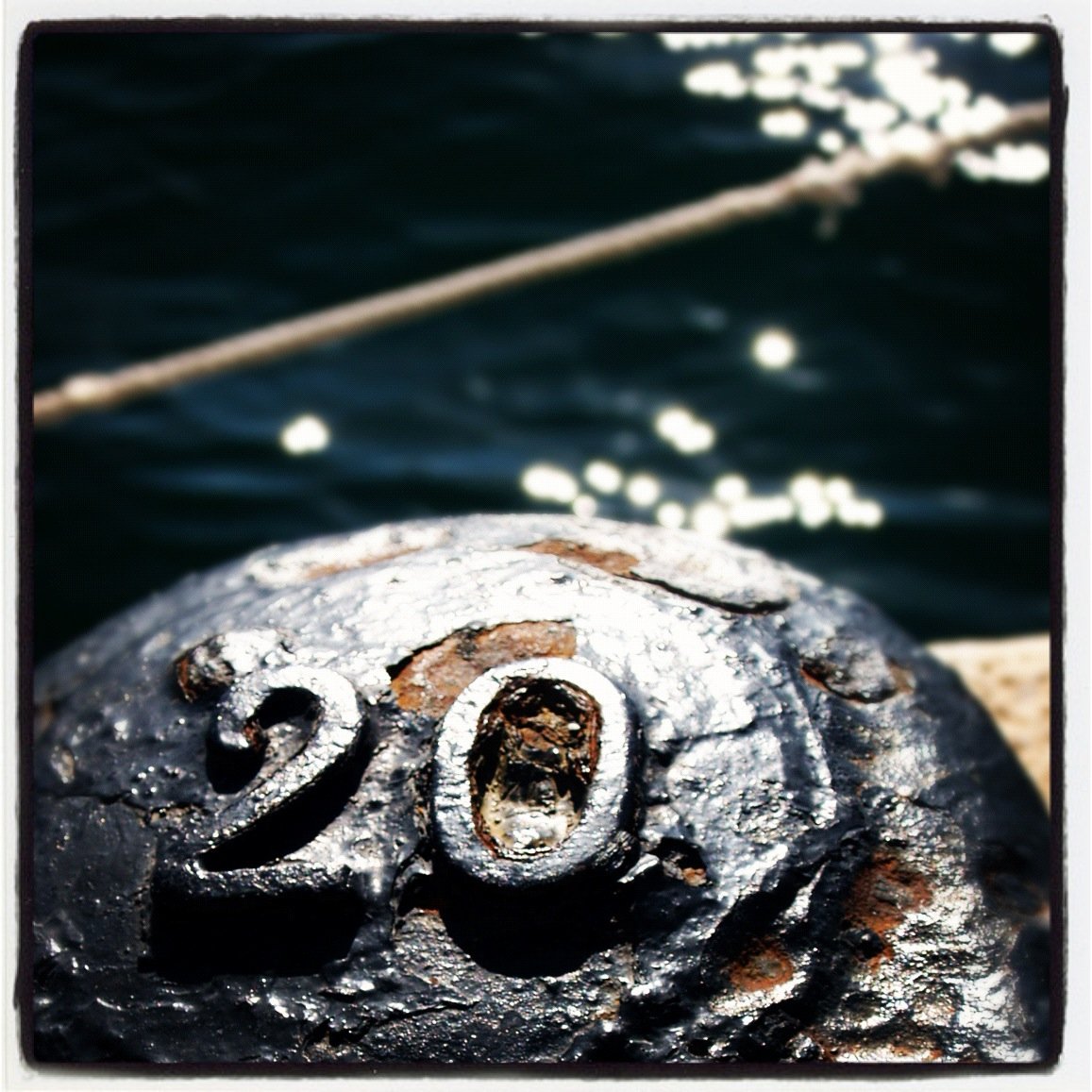
Visiting Bosque de la Grandiella: Hours, Tickets, and Attractions in Avilés, Spain
Publication Date: 01/08/2024
Introduction to Bosque de la Grandiella
Nestled in the heart of Avilés, Spain, the Bosque de la Grandiella offers a serene escape into nature, blending seamlessly with the city’s rich historical and cultural tapestry. Avilés, located in the Asturias region, is marked by its medieval roots, industrial prowess, and contemporary cultural renaissance. The Bosque de la Grandiella, a testament to Avilés’ commitment to sustainability and environmental conservation, provides visitors with an immersive experience in a lush forest environment. This guide aims to offer comprehensive insights into planning a visit to this hidden gem, covering practical information, travel tips, and the forest’s significance in the broader context of Avilés’ history and culture. Whether you are a nature enthusiast, a history buff, or simply seeking a unique travel destination, Bosque de la Grandiella and Avilés promise a rich array of experiences (source).
Table of Contents
- Introduction
- Historical Background
- Bosque de la Grandiella: A Symbol of Sustainability
- FAQs
- Conclusion
Historical Background
Early History and Medieval Significance
The historical roots of Avilés stretch back to the Middle Ages. The port of Avilés has been a crucial economic hub since the medieval period, playing a significant role in Spain’s economy. Serving as a vital connection between the Atlantic Ocean and inland regions, Avilés facilitated trade and commerce. In 1085, King Alfonso VI of León granted Avilés city rights through the Charter of Avilés, marking a significant milestone in the city’s history (source).
During this period, Avilés held a monopoly on the distribution of salt, a valuable commodity at the time. This economic prosperity was reflected in the city’s architecture, with many rich merchants and nobles building impressive villas and palaces. The ratification of the Charter of Avilés by Alfonso VII of León in the 12th century led to the construction of a city wall, remnants of which can still be seen today. The city’s wealth and strategic importance attracted a diverse population, contributing to its cultural and architectural richness (source).
Transition to Modern Times
The economic and cultural development of Avilés continued into the modern era. The 19th and 20th centuries saw significant changes, particularly with the rise of the port’s importance due to increased trade with America and Cuba. This period of prosperity brought about changes in daily life, with advancements in railway, printing, tourism, leisure, and culture (source).
Industrial Revolution and Steel Industry
The most transformative period in Avilés’s history came with the industrial revolution and the establishment of the steel industry. In 1950, the Spanish public steel company ENSIDESA built an impressive plant in Avilés, featuring four blast furnaces. This development turned the factory site into a bustling industrial city. By 1960, ENSIDESA was the largest producer of steel and iron in Spain, employing 7,000 people. The city’s population more than doubled in a decade, growing from 21,000 in 1950 to 48,000 in 1960, with 65 percent of the population being migrants. By 1970, the population had surged to over 80,000, with 27,000 people working at ENSIDESA at its peak (source).
In the 1990s, ENSIDESA merged with other Spanish steel companies to form Corporación de la Siderúrgia Integral, which was later privatized and renamed Aceralia. A decade later, the factory became part of the larger Arcelor-Mittal group, continuing its legacy in the steel industry (source).
Cultural Renaissance and Modern Avilés
Despite the challenges of transitioning from an industrial to a post-industrial society, Avilés has experienced a cultural renaissance. The city’s historical center, known as “Villa del Adelantado” after Admiral Pedro Menéndez de Avilés, showcases a collection of buildings that reflect its rich history and development from a medieval town to a modern city. Notable historical structures include the temple of the Franciscans, originally named the Church of Saint-Nicholas, and modern constructions such as the Camposagrado and Ferrera palaces (source).
One of the most striking features of modern Avilés is the juxtaposition of its historical and industrial landscapes. The Centro Niemeyer, a cultural center designed by the renowned Brazilian architect Oscar Niemeyer, stands in stark contrast to the industrial zone and the steel factory of Arcelor-Mittal on the other side of the river Avilés. This unique combination of culture and industry symbolizes the city’s rebirth as a tourist and cultural destination (source).
Bosque de la Grandiella: A Symbol of Sustainability
In recent years, Avilés has also focused on sustainability and environmental initiatives. The Bosque Rotario de la Grandiella, a project spearheaded by the Rotary Club Avilés, is a testament to these efforts. The project involves the planting of various tree species, including birches, rowans, oaks, and maples, to create a green buffer zone between the avenue of La Grandiella and the N-632 highway. This initiative not only enhances the city’s green spaces but also contributes to environmental conservation and sustainability (source).
Visitor Information
Best Time to Visit
The optimal time to visit Bosque de la Grandiella is during spring (April to June) and autumn (September to November). During these periods, the weather is mild, and the forest is at its most vibrant, with lush greenery and blooming flora. Summer can be warm and crowded due to peak tourist season, while winter can be chilly and damp, which might not be ideal for all visitors.
Visiting Hours
The forest is open to visitors 24/7 throughout the year. However, it’s advisable to visit during daylight hours to make the most of your experience and ensure safety.
Getting There
Bosque de la Grandiella is located in Avilés, a city in the Asturias region of Spain. The nearest major airport is Asturias Airport (OVD), approximately 15 kilometers from Avilés. From the airport, you can take a taxi or a bus to reach the city center. Avilés is also well-connected by train and bus services from other major cities in Spain, such as Madrid and Barcelona.
Tickets and Fees
As of August 2024, there is no entrance fee to visit Bosque de la Grandiella. However, it is always advisable to check the latest information on the official tourism website of Avilés for any updates or changes in policies.
Guided Tours
For a more enriching experience, consider joining a guided tour. Local guides offer insightful information about the forest’s history, biodiversity, and cultural significance. Tours can be booked through various local tour operators or through the Avilés Tourist Office.
What to Wear
- Footwear: Sturdy, comfortable walking shoes or hiking boots are recommended due to the uneven terrain and potential for muddy paths.
- Clothing: Dress in layers to accommodate the changing weather conditions. A waterproof jacket is advisable, especially during the rainy season.
- Accessories: Sunglasses, a hat, and sunscreen are essential for sunny days. Insect repellent is also recommended to protect against mosquitoes and other insects.
What to Bring
- Water and Snacks: Carry sufficient water and light snacks, as there are limited facilities within the forest.
- Map and Compass: While the main trails are well-marked, having a map and compass can be useful for exploring less-traveled paths.
- Camera: The forest offers numerous picturesque spots, so a camera or a smartphone with a good camera is a must for capturing memories.
Safety Tips
- Stay on Marked Trails: To protect the natural environment and for your safety, always stay on designated trails.
- Wildlife: While encounters with wildlife are rare, it is important to maintain a safe distance and not feed any animals.
- Weather: Check the weather forecast before your visit. Sudden weather changes are common, so be prepared for rain or cooler temperatures.
- Emergency Contacts: Save the local emergency contact numbers on your phone. The general emergency number in Spain is 112.
Accessibility
Bosque de la Grandiella offers limited accessibility for visitors with mobility issues. Some trails are wheelchair accessible, but many paths are uneven and may not be suitable for all. It is advisable to contact the Avilés Tourist Office for detailed information on accessible routes and facilities.
Nearby Attractions
- Centro Niemeyer: Located in Avilés, this cultural center designed by the renowned architect Oscar Niemeyer hosts various exhibitions, concerts, and events. More information can be found on their official website.
- Old Town of Avilés: A short distance from the forest, the historic center of Avilés features charming streets, traditional Asturian architecture, and numerous cafes and shops. It is a great place to explore before or after your visit to the forest.
Local Cuisine
After a day of exploring, indulge in the local Asturian cuisine. Some must-try dishes include:
- Fabada Asturiana: A rich bean stew made with chorizo, morcilla (blood sausage), and pork.
- Cachopo: Breaded veal fillets stuffed with ham and cheese.
- Sidra: Traditional Asturian cider, often poured from a height to aerate the drink.
Many local restaurants and cider houses (sidrerías) in Avilés offer these specialties. For recommendations, visit the Avilés Tourism website.
Environmental Responsibility
Visitors are encouraged to practice responsible tourism to preserve the natural beauty of Bosque de la Grandiella:
- Leave No Trace: Carry out all trash and dispose of it properly.
- Respect Wildlife: Observe animals from a distance and do not disturb their natural habitat.
- Stay on Trails: Avoid trampling vegetation and stick to marked paths to minimize environmental impact.
FAQs
What are the visiting hours for Avilés’s main attractions?
Centro Niemeyer is open daily from 10 AM to 8 PM. The Church of Saint-Nicholas is open Monday to Saturday from 9 AM to 7 PM, and Sunday from 10 AM to 2 PM. Camposagrado Palace is open Tuesday to Sunday from 10 AM to 6 PM.
How do I purchase tickets for Avilés attractions?
Tickets can be purchased online through official websites or at the entrance of each attraction. Consider buying a city pass for discounted entry to multiple sites.
What nearby cities should I visit?
Oviedo and Gijón are highly recommended for their rich cultural experiences and are easily accessible by train from Avilés.
Are guided tours available in Avilés?
Yes, guided tours are available through the local tourism office. It is advisable to book in advance.
Conclusion
Avilés’s historical background is a tapestry of economic prosperity, architectural splendor, industrial transformation, and cultural renaissance. From its medieval roots as a vital port city to its modern identity as a cultural and industrial hub, Avilés offers a unique blend of history, industry, and culture. The Bosque de la Grandiella stands as a symbol of the city’s commitment to sustainability and environmental conservation, adding another layer to its rich historical narrative. Plan your visit today to explore this captivating city and its many offerings.
Call to Action
Stay updated with the latest events and attractions in Avilés by downloading our official mobile app. Follow us on social media for more travel tips and updates, and don’t forget to check out our other related posts for more exciting destinations!
